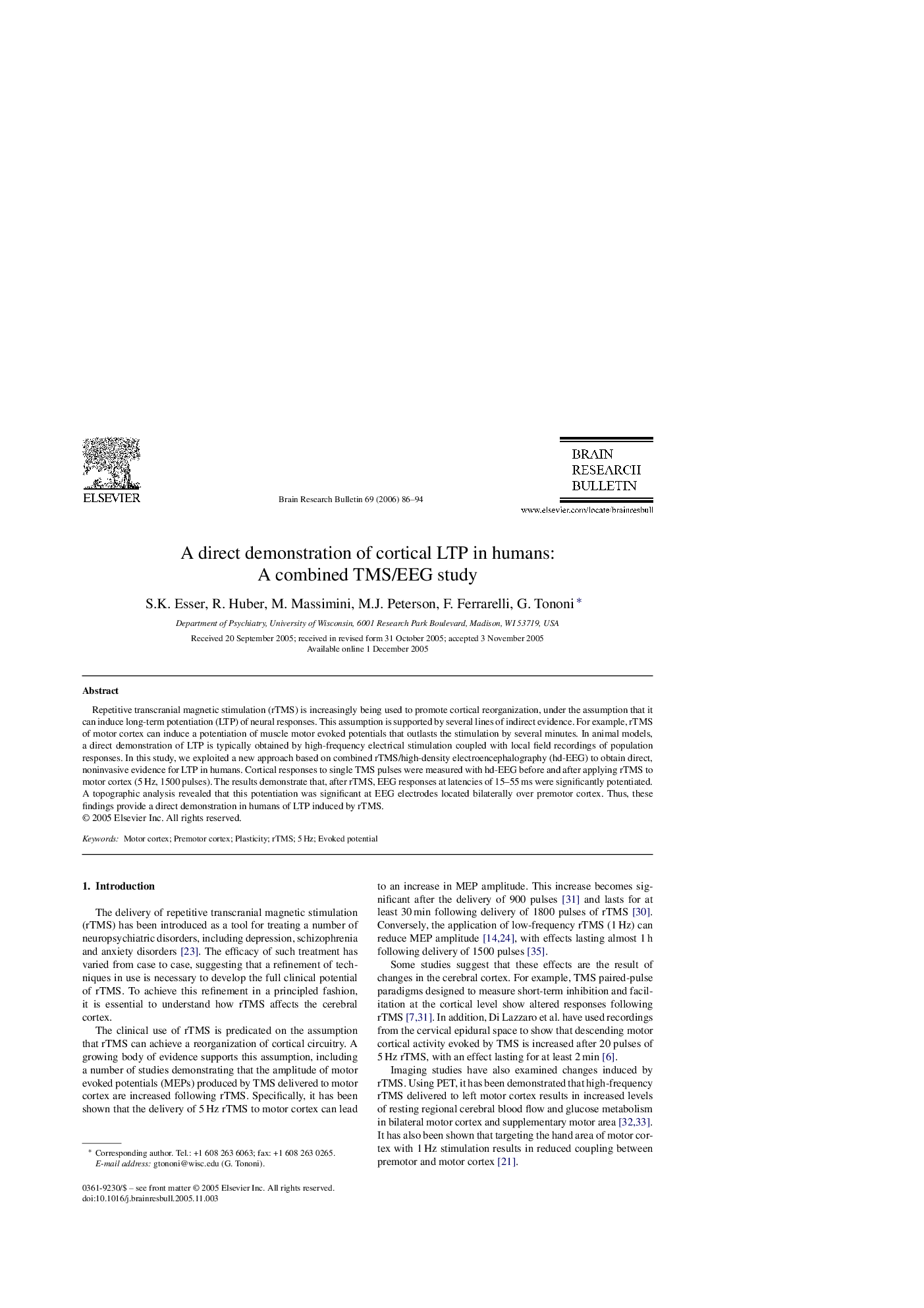| Article ID | Journal | Published Year | Pages | File Type |
|---|---|---|---|---|
| 4320414 | Brain Research Bulletin | 2006 | 9 Pages |
Repetitive transcranial magnetic stimulation (rTMS) is increasingly being used to promote cortical reorganization, under the assumption that it can induce long-term potentiation (LTP) of neural responses. This assumption is supported by several lines of indirect evidence. For example, rTMS of motor cortex can induce a potentiation of muscle motor evoked potentials that outlasts the stimulation by several minutes. In animal models, a direct demonstration of LTP is typically obtained by high-frequency electrical stimulation coupled with local field recordings of population responses. In this study, we exploited a new approach based on combined rTMS/high-density electroencephalography (hd-EEG) to obtain direct, noninvasive evidence for LTP in humans. Cortical responses to single TMS pulses were measured with hd-EEG before and after applying rTMS to motor cortex (5 Hz, 1500 pulses). The results demonstrate that, after rTMS, EEG responses at latencies of 15–55 ms were significantly potentiated. A topographic analysis revealed that this potentiation was significant at EEG electrodes located bilaterally over premotor cortex. Thus, these findings provide a direct demonstration in humans of LTP induced by rTMS.
